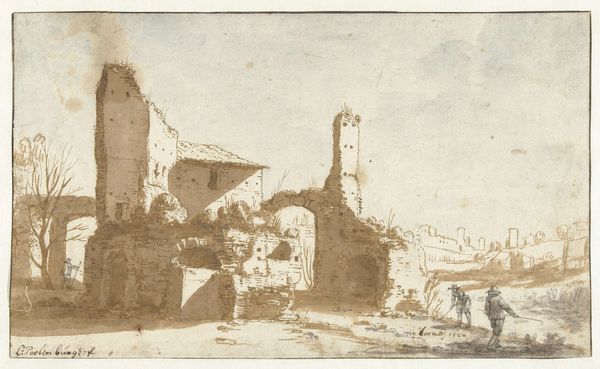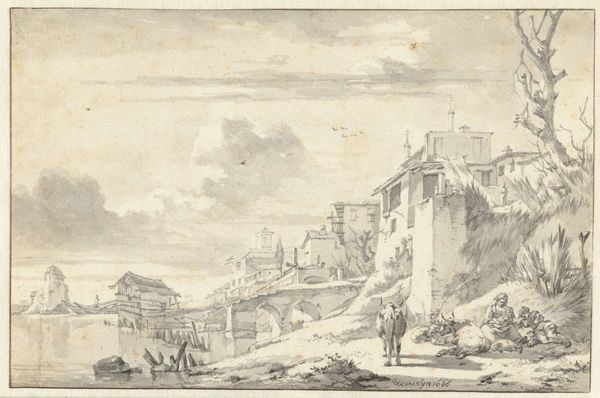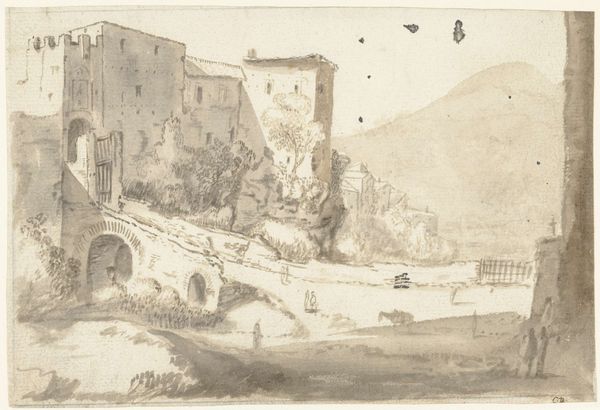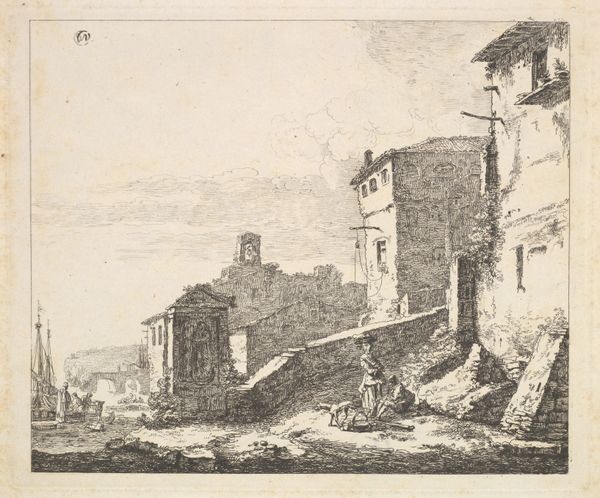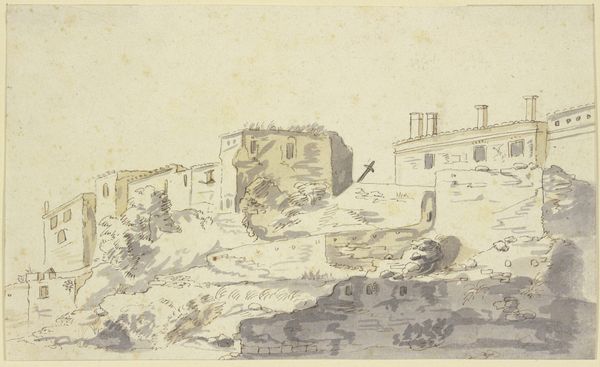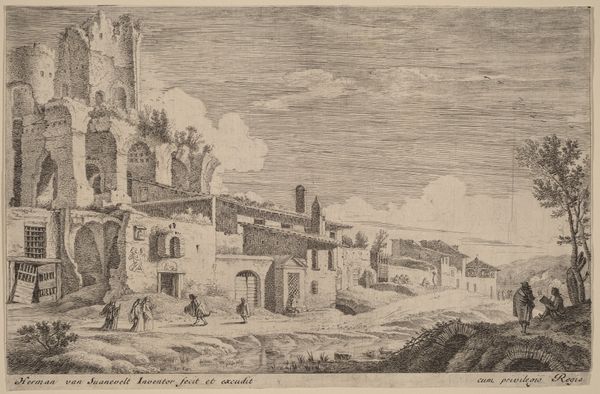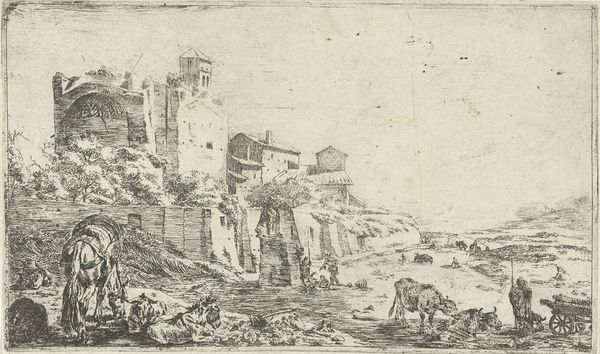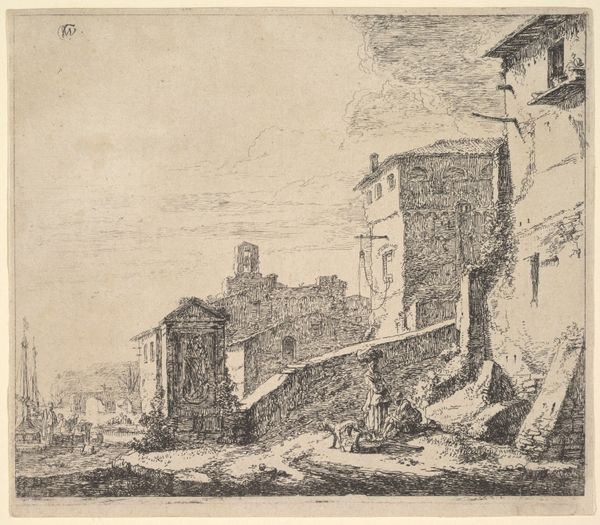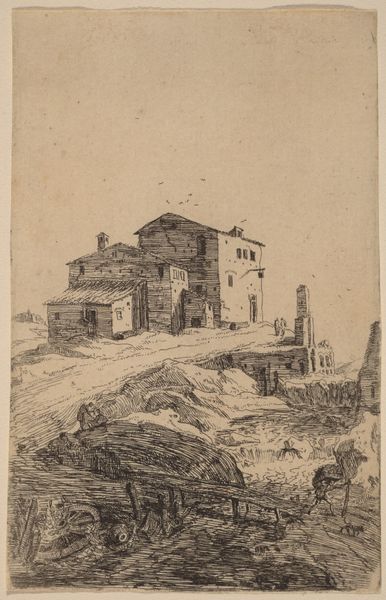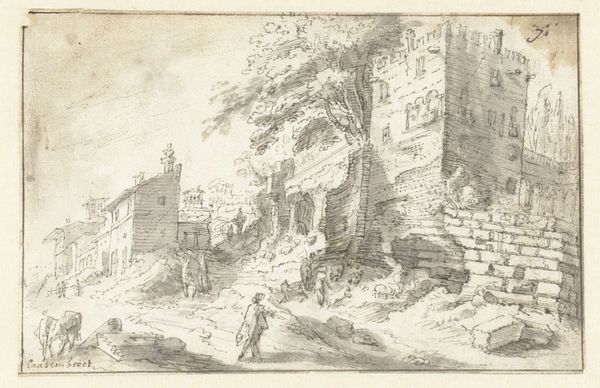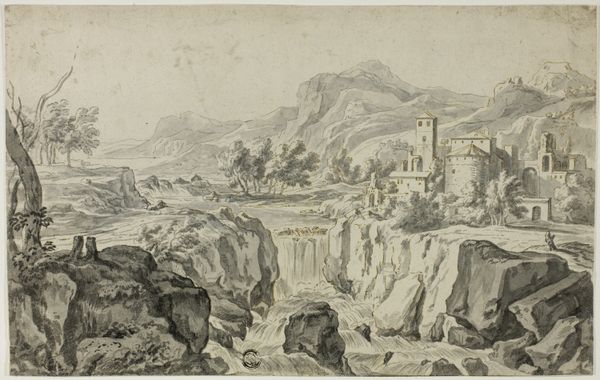
drawing, paper, ink
#
drawing
#
baroque
#
landscape
#
etching
#
paper
#
ink
#
cityscape
Dimensions: height 235 mm, width 248 mm
Copyright: Rijks Museum: Open Domain
Editor: So, here we have "Castello Bomarzo," a cityscape drawing from 1625 by Bartholomeus Breenbergh, using ink on paper. It gives me a sense of remoteness and perhaps even loneliness; the stark castle contrasts with the open landscape. What do you see in this piece? Curator: The desolation you sense likely reflects a broader artistic and political trend of the era. This drawing wasn’t just about capturing a pretty scene. Think about the role of landscape art in the 17th century. Patronage shifted from religious institutions to wealthy individuals who commissioned works that depicted their power and status, often through idealized landscapes. How does this seemingly simple drawing participate in that? Editor: I see. So, by depicting a rather formidable and isolated castle, Breenbergh might be alluding to the owner's dominion and power. The strategic positioning atop the hill… It is a demonstration of control. Curator: Precisely. But there's more. Notice the relatively small figures making their way up to the castle. What does that choice achieve in terms of how we, as viewers, understand the work and the symbolic implications around the "public role of art"? Editor: They're dwarfed by the castle's scale and imposing stature. They are being subjected by it? Or being overseen by it? Curator: Exactly! And think about where a work like this might be displayed—in the home of someone with the economic and cultural capital to enjoy the work of artists like Breenbergh. How does knowing that context inform how the piece participates in its world? Editor: It really shifts my perspective, knowing how the art was being presented and to whom. It adds so much more meaning! Thank you for expanding my vision on this art piece.
Comments
No comments
Be the first to comment and join the conversation on the ultimate creative platform.
